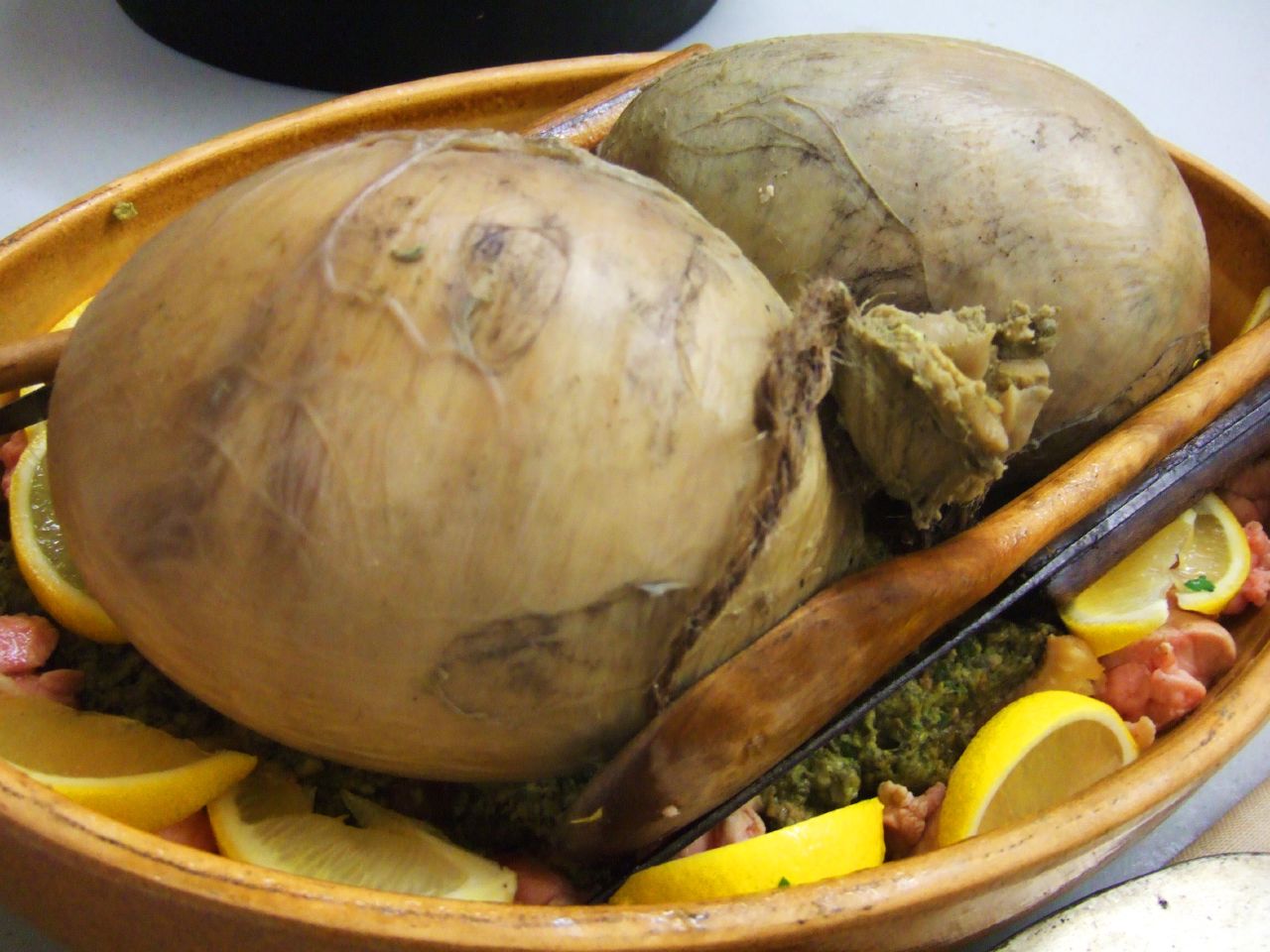Cooking Apple, Sour Milk & Molasses Pancakes at Old Stone House yesterday. See more photos from the event here.
I was too immersed in pancake making to know how many people came out to the event yesterday. Take a look for yourself:
Despite a constant flow of pancakes, the line was this long for an hour and a half. I was flabberghasted.
I want to thank everyone who was able to make it out yesterday, and thank you for waiting patiently and amicably while I furiously flipped flapjakes. I simply was not prepared, nor was I expecting, to serve hearth-cooked pancakes for 200 people; I'm so pleased that everyone was able to get a taste, and (hopefully) went home happy.
If you enjoyed yourself, then I encourage you to make these recipes at home! They work just as well on an electric skillet as they do over an open hearth--and it's probably a more efficient method of cooking.
Thank you again for the wonderful day; if you were able to attend, please leave your thoughts in the comments. Enjoy the recipes, and I sincerely hope to see you at another event in the future.
***
Apple Pancakes
Adapted from
The New England Economical Housekeeper by Esther Allen Howland, 1845.
Modern recipe adapted from
The Old Sturbridge Village Cookbook, 3rd ed. by Jack Larkin, 2009.
The original recipes instructs the cook to deep fry these pancakes in lard, like a doughnut. But I find this recipe works just as well fried with butter on a griddle or in a skillet.
2 cups sour milk or 1 1/2 cups fresh milk with 2 tablespoons lemon juice
2 baking apples
3/4 cup molasses
3/4 cup cornmeal
1 teaspoon baking soda
2 cups flour
1. Combine milk and molasses, whisking until emulsified.
2. Pare and core apples, and dice into 1/4 in. cubes. Add to milk and molasses mixture and set aside.
3. In another bowl, whisk cornmeal, baking soda and flour until combined. Using a wooden spoon or a spatula, create a well in the center of the dry ingredients. Pour milk mixture into the well, and mix until combined.
4. Fry in a skillet or on a griddle, with a generous amount of butter. Serve with maple syrup, butter, or a hard sauce.
Clove and Rosewater Pancakes
Adapted from
The New England Economical Housekeeper by Esther Allen Howland, 1845
Rosewater can be food in the Indian or Middle Eastern section of your grocery store.
3 tablespoons sugar
½ tsp cloves
1 teaspoon baking soda
2 cups flour
¼ teaspoon salt
2 eggs, lighten beaten with
½ tsp rosewater
1 cup whole milk
1. Combine sugar, cloves, baking soda, flour and salt in a large bowl. Whisk until combined; set aside.
2. Whisk the milk into the egg and rosewater mixture.
3. Using a wooden spoon or a spatula, create a well in the center of the dry ingredients. Pour milk mixture into the well, and mix until combined.
4. Fry in a skillet or on a griddle, using a generous amount of butter. Serve with maple syrup, butter, or a hard sauce.
Pumpkin Cornmeal Pancakes
Adapted from
Food, Drink and Celebrations of the Hudson Valley Dutch by Peter G. Rose, 2009.
"Although (the Dutch) continued their own food ways, they did incorporate native foods into their daily diets. They did so, however, in ways that were familiar to them: for example, when they made pumpkin cornmeal pancakes (cornmeal instead of wheat flour) or pumpkin sweetmeat (instead of quince paste)."
--
Food, Drink and Celebrations of the Hudson Valley Dutch by Peter G. Rose
1 cup flour
1 cup yellow cornmeal
1 cup brown sugar
1/2 teaspoon nutmeg
1/2 teaspoon mace
1/2 teaspoon cloves
1 teaspoon baking soda
1 cup pumpkin puree
2 eggs, lightly beaten with
1 1/2 cups whole milk
1. In a large bowl, whisk together flour, cornmeal, sugar, and spices. Set aside.
2. Whisk together egg and milk mixture with pumpkin puree until throughly amalgamated.
3. Using a wooden spoon or a spatula, create a well in the center of the dry ingredients. Pour milk mixture into the well, and mix until combined.
4. Fry in a skillet or on a griddle, with a generous amount of butter. Serve with maple syrup, butter, or a hard sauce.
A Hard Sauce
From
Miss Corson's Practical American Cookery and Household Management by Juliet Corson, 1886.
1 pound unsalted butter, room tempeature
2 cups sugar
½ cup white wine or brandy
1 tsp nutmeg or cinnamon (optional)
Beat in an electric mixer on medium until evenly combined.










































